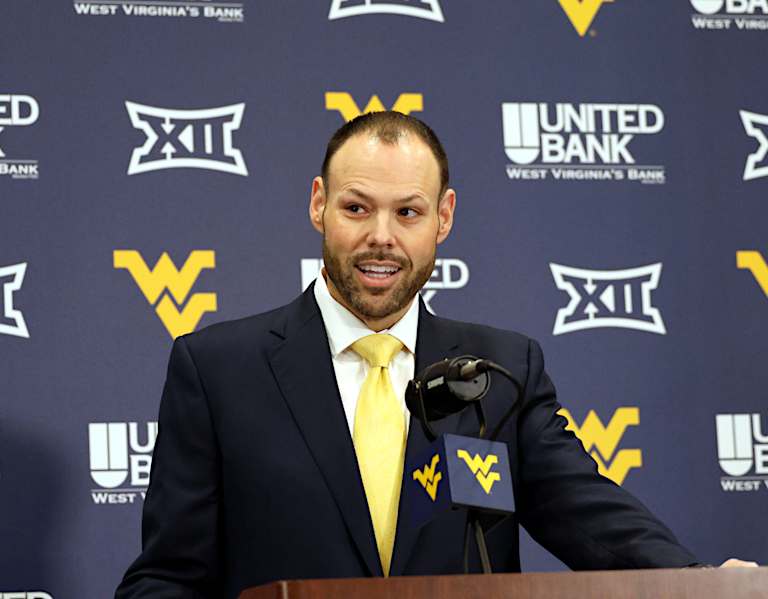The highlight that will loop was, of course, Lionel Messi’s. In the 54th minute of a critical Club World Cup match, he lined up a free kick and … splash. He saw Porto’s goalkeeper cheating. He picked out a top corner. He lifted 30,000 people from their seats, hauled Inter Miami toward the knockout rounds, and gave this start-up tournament its first signature moment.
But that was not what made Miami head coach Javier Mascherano glow toward the end of his post-match press conference Thursday.
Advertisement
On Messi, “what else can I say?” Mascherano asked. “He's the best player to ever play the sport.”
The subject of his two-minute monologue, instead, was what Messi called the “young boys.”
It was Noah Allen, Ian Fray and Benjamin Cremaschi, three homegrown players who, as Messi said, had exhibited some “nerves” in Saturday’s Club World Cup opener. That, Messi noted, was their “first time playing in such a special, meaningful competition.” They’d struggled against Al Ahly in a 0-0 draw. To many observers, they embodied the reason Miami wouldn’t be able to survive on this elevated stage.
On Thursday in Atlanta, though, they thrived.
Advertisement
Allen, a 21-year-old from Pembroke Pines, Florida, recovered from an early mistake to put in a solid shift at left back.
Cremaschi, 20, from Key Biscayne, excelled in three different positions.
Fray, a 22-year-old who’s already overcome three ACL tears and a meniscus injury in recent years, “played at a very high level,” Mascherano said, and helped hold Porto’s Samu Aghehowa and Rodrigo Mora — an attacking pair worth over $100 million — to just one goal from the penalty spot.
Ian Fray (L) and Benjamin Cremaschi (R) played pivotal roles in holding Porto to just one goal in Inter Miami's 2-1 win Thursday. (Photo by Shaun Botterill - FIFA/FIFA via Getty Images)
(Shaun Botterill - FIFA via Getty Images)
The three local kids made $91,383, $202,216 and $125,000 last season. Up against a European team of what Mascherano called “top-level, international-level players,” many worried that they’d get exposed. They were only in the lineup because regular starters, such as Jordi Alba, were injured — and, critics argued, because MLS roster restrictions and spending caps prevented Inter Miami from adding better replacements.
Advertisement
This had been the narrative when Mexico’s Monterrey dumped Miami out of the CONCACAF Champions Cup in Messi’s first season.
It was the excuse being readied at this Club World Cup, even the day before Saturday’s and Thursday’s games.
“It’s clear that we needed new signings,” Mascherano said last Friday after a pre-Club World Cup transfer window shut without any additions.
On Wednesday, Sergio Busquets and Federico Redondo both spoke about the league’s self-imposed limits. “I think what MLS is missing in order to take the next step is loosening the salary cap a bit, allowing for that freedom,” Redondo said. “For football [here] to keep growing, more money needs to be invested — that’s what’s happening all over the world.”
Advertisement
That’s what happens in Porto, at a club that regularly reaches the Champions League knockout stages. Although it often sells more than it buys, Porto had spent roughly $225 million on new signings since the summer of 2022 — far more than any MLS club has spent in its entire history. It came to the Club World Cup after its worst season in 10 years, and without a star like Messi; but its depth of talent, most assumed, would overrun Miami’s aging and unbalanced squad.
Instead, it was Miami who played on the front foot. It was Miami who “suffered when we had to suffer,” as Mascherano said, but also held possession at times and dictated play. After 22-year-old midfielder Telasco Segovia equalized, and Messi gave Inter the lead, for 10 or 15 remarkable minutes, they controlled the ball and the game.
They did that, in part, because they had Messi and Busquets and Luis Suarez. But they played coherent soccer — something they haven’t always done — because not a single one of their 11 players looked out of place.
That’s a credit to Cremaschi, who Mascherano called “a player with a huge heart.”
Advertisement
It’s a credit to Allen, who the former Barcelona stalwart-turned-coach called “one of my favorites. … He’s a kid whose playing style reflects how I felt when I played.”
And it’s a credit to Fray, who “has shown tremendous growth this season,” Mascherano added. "He’s realizing that when he starts adding seriousness and focus to his game, he’s a player with amazing qualities.”
It’s also a credit to Miami’s academy, which is really what made Mascherano glow. “I believe the club should see itself in players like that, homegrown players,” he said. “It mustn’t stop paying attention to the academy and its players. Because in the end, beyond the big names we have who show the way with their experience, the real sense of belonging comes from the people who are from the club.”
Advertisement
The academy, he said, is “where, at least in my opinion, great teams are built.”
Miami’s was only established in 2019, and it’s not why the Herons are here, on this stage. But it’s part of why they could compete with a club like Porto, and part of why they’ll forever hold a unique place in Major League Soccer history: as the first MLS team ever to beat a European opponent in an official competition.
.png)
 German (DE)
German (DE)  English (US)
English (US)  Spanish (ES)
Spanish (ES)  French (FR)
French (FR)  Hindi (IN)
Hindi (IN)  Italian (IT)
Italian (IT)  Russian (RU)
Russian (RU) 








Comments